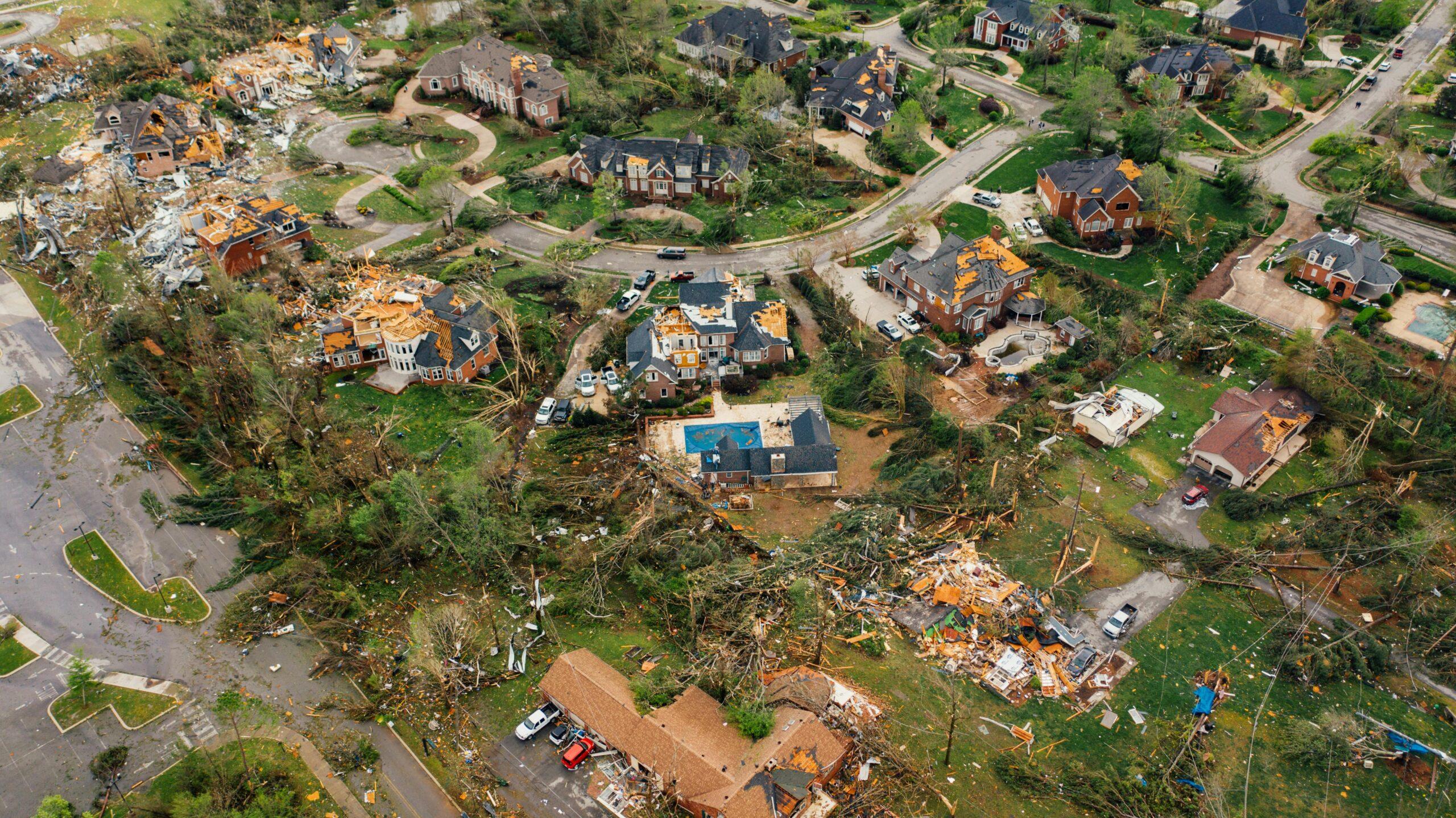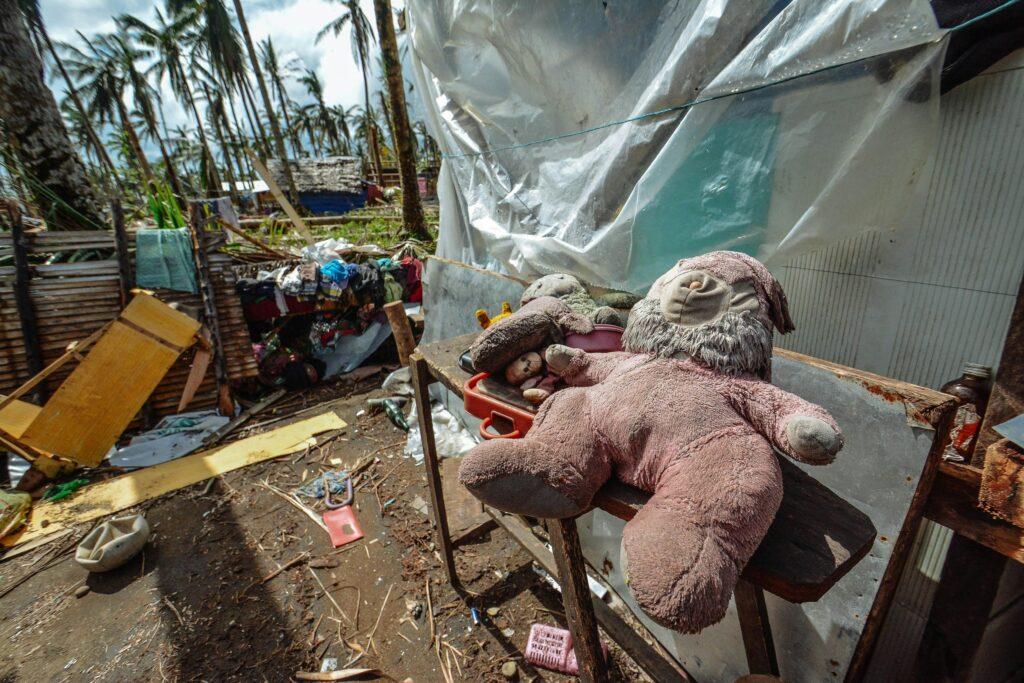
-
by americansteelcorebuilders.com
- 29 September 2024
- Education
- (0)
- 08 Mins
Lessons Learned: Preparing for Future Natural Disasters in the Wake of Hurricane Helene
Rethinking preparedness in the aftermath of Hurricane Helene
With the devastating impact of Hurricane Helene still fresh in our minds, it’s crucial to reflect on how we can better prepare for future natural disasters. As many of us learned, advanced emergency preparedness can significantly reduce the risks associated with such formidable storms. Whether it’s ensuring you have an emergency kit ready or knowing evacuation routes by heart, these steps can make a world of difference. In this blog, we’ll explore essential lessons we can take from Hurricane Helene to enhance our hurricane preparedness.

The Impact of Hurricane Helene
Hurricane Helene was a wake-up call for many communities, shining a spotlight on the unpredictability and destructive power of nature. As we delve into this topic, it’s crucial to understand not only the immediate devastation but also the lingering challenges faced by those affected. Future disaster planning can help mitigate those weather events still to come.
Overview of the Devastation
When Hurricane Helene made landfall, it brought with it roaring winds, torrential rains, and a terrifying storm surge. Its path of destruction was marked by thousands of homes and businesses being swallowed by unprecedented floods and relentless winds. Streets that once bustled with life became eerily silent, drowned under debris and water.
Infrastructural damage was significant, with power lines snapped like twigs and roads turned into rivers. Transportation and communication networks were crippled, which made rescue efforts more challenging. Schools and hospitals, supposed havens in times of crisis, found themselves grappling with damage they were unprepared to handle. The aftermath of Hurricane Helene revealed the urgent need to reassess how communities plan for such catastrophic events.
Communities Affected
Communities along Helene’s path faced various levels of destruction. Coastal towns bore the brunt of the storm, with many neighborhoods completely demolished. Residents had to be evacuated, and some had to say goodbye to their homes forever. Inland areas, presumed to be safer, were not spared, facing intense floodwaters and power outages.
While all communities endured hardships, those with fewer resources suffered most. Vulnerable populations, such as the elderly or low-income families, found it particularly difficult to find safe shelter or evacuate in time. Recovery for these groups has been slower due to limited access to necessary resources and services.
Financial and Emotional Toll
The financial burden left in Helene’s wake is staggering. Insurance claims soared as homes, cars, and personal belongings were lost. Businesses faced closures due to structural damages or loss of inventory, leading to widespread economic instability. The long road to financial recovery continues for many, with some facing the painful reality that rebuilding might take years.
But the storm’s impact wasn’t only physical or financial—it deeply affected mental well-being too. Many are grappling with emotional scars, having lost not only property but also the sense of security and normalcy they once knew. The fear of future storms looms large, creating anxiety and stress that cannot be easily erased.
Key Natural Disaster Lessons for Future Preparedness
Reflecting on the havoc wreaked by Hurricane Helene, it’s vital to pull from the ashes valuable lessons that can bolster our readiness for future natural disasters. By learning from past challenges, communities can forge a path toward greater resilience.
Importance of Early Warning Systems
One of the critical takeaways from Helene is the indispensable role of early warning systems. These systems, when effective, provide precious lead time for evacuation and preparation, potentially saving countless lives.
– Technology Improvement: Upgrading weather forecasting technology and communication networks ensures that warnings are disseminated promptly and accurately.
– Accessible Warnings: It’s important that alerts reach everyone, including non-English speakers and individuals with hearing or visual impairments, through accessible formats.
Investments in these systems can significantly mitigate the extent of a disaster’s impact, offering people a chance to prepare rather than react.
Ensuring Community Awareness and Engagement
A well-informed community is a resilient one. Building awareness and encouraging engagement can make a world of difference during disasters.
– Education Programs: Initiatives that teach residents about emergency procedures, safe evacuation routes, and survival techniques are invaluable.
– Community Drills: Regular drills simulate disaster scenarios, ensuring that the community knows how to respond quickly and efficiently.
– Local Leaders and Volunteers: Empowering community leaders and forming volunteer networks help spread information and offer assistance where it’s needed most.
By fostering a community culture of preparedness, individuals learn to rely on each other, speeding up the recovery process and reinforcing resilience.
Strengthening Infrastructure and Resources
Stronger infrastructure and readily available resources form the backbone of any effective disaster preparedness plan.
– Building Codes and Standards: Implementing stricter building codes that emphasize resilience ensures homes and businesses are better equipped to withstand storms.
– Flood Defenses and Drainage: Enhancing flood defenses and investing in robust drainage systems can help prevent the catastrophic flooding that overwhelmed many areas during Helene.
– Resource Allocation: Adequate stockpiling of emergency supplies, such as food, water, and medical resources, ensures communities can sustain themselves until aid arrives.
Investments in these areas not only reduce the immediate impact of a disaster but also expedite recovery efforts, allowing communities to bounce back faster and stronger.
In conclusion, the devastation wrought by Hurricane Helene serves as a somber reminder of nature’s power. However, by leveraging the insights gained from such experiences, communities can transform vulnerability into resilience. Proactive planning, community engagement, and infrastructure fortification will be key to weathering the storms that the future may hold. Let’s remain vigilant, prepared, and ever hopeful as we work together to protect our homes and loved ones from future natural disasters.
Developing Effective Disaster Response Plans
Creating a robust disaster response plan is crucial for handling natural disasters like Hurricane Helene. A well-prepared plan can reduce anxiety, save lives, and minimize property damage during a crisis. Here’s how you can ensure your disaster response plan is as effective as possible.
Collaboration with Local Authorities
When it comes to preparing for natural disasters, teamwork makes the dream work. Collaborating with local authorities is a fundamental step in an effective disaster response plan. Local government agencies often have access to resources and insights that are crucial during an emergency. Here’s how you can partner with them:
– Attend Community Meetings: Many local communities host meetings to discuss disaster preparedness that you can attend to gain valuable information and voice your concerns.
– Sign Up for Alerts: Take advantage of services that provide emergency alerts through text and email. These alerts often come directly from state or local authorities.
– Volunteer for Drills: Participate in community-wide drills organized by local authorities. These practice sessions help familiarize everyone with the emergency procedures and underline any weak points in the plan.
– Share Resources and Information: Work closely with neighborhood associations and city councils to develop resource-sharing systems, like shelter locations and emergency hotlines.
Creating Effective Communication Channels
Communication is key, especially during emergencies. Establishing clear and effective communication channels ensures that everyone receives crucial information when it matters most. Here’s what you can do:
– Designate a Point Person: Choose someone reliable to coordinate communication efforts within your family or community. This person will be responsible for sending and receiving updates.
– Use Multiple Platforms: Rely on various communication tools to reach everyone, such as social media, phone trees, community radios, and group messaging apps. Diversifying the channels helps in case one fails.
– Keep It Local and Personal: While national news can provide an overview, local communication outlets are vital during a disaster. Stay tuned to local radio stations and community channels that focus on your specific area.
– Create a Contact List: Have an up-to-date list that includes local agencies, family members, neighbors, and emergency services. Make sure everyone knows where the list is and how to use it.
Stockpiling Essential Supplies
Having the right supplies on hand can make a big difference during an emergency. Here’s how you can be prepared:
– Build an Emergency Kit: Include essentials like water, non-perishable food, a first-aid kit, flashlights, batteries, and blankets. Remember to check and update these supplies routinely.
– Think Beyond the Basics: Depending on your needs, consider other supplies such as prescription medication, pet food, or baby formula. Tailor your stockpile to suit everyone in your household.
– Secure Important Documents: Store critical documents like passports, insurance papers, and medical records in a waterproof container. Keeping digital copies on a secure cloud could also be a lifesaver.
– Evaluate Storage Options: Ensure your storage areas are easily accessible but safe from potential damage. Ideally, store supplies in multiple locations in case a primary spot becomes unreachable.
By learning from Hurricane Helene and implementing these strategies, you can build a comprehensive disaster response plan. It’s all about taking proactive future disaster planning steps today to ensure safety and well-being tomorrow.
More Help for Hurricane Helene Survivors in Florida
Learning from Natural Disaster Lessons
In the aftermath of Hurricane Helene, we’ve been reminded of the importance of being prepared for natural disasters. This hurricane taught us crucial lessons that can guide our future preparedness efforts. From stocking up on essential supplies beforehand to having clear communication plans and knowing evacuation routes, there’s no doubt that being proactive is key. Let’s take these experiences to heart and ensure that we, our families, and our communities, are ready for whatever nature might throw our way. By learning from the past, we can face future challenges with resilience and confidence.
In the wake of Hurricane Helene, the importance of building homes that can withstand future natural disasters has never been clearer. As we learn from the devastation caused by the storm, it’s crucial to prepare for the future with smarter, more resilient construction. If you’re ready to rebuild and protect your family, consider a hurricane-resistant home designed to endure winds up to 178 mph. At American Steel Core Builders, we specialize in strong, energy-efficient steel frame homes that offer peace of mind and long-term safety. Contact us today to learn how we can help you build a safer, stronger home for the future.
